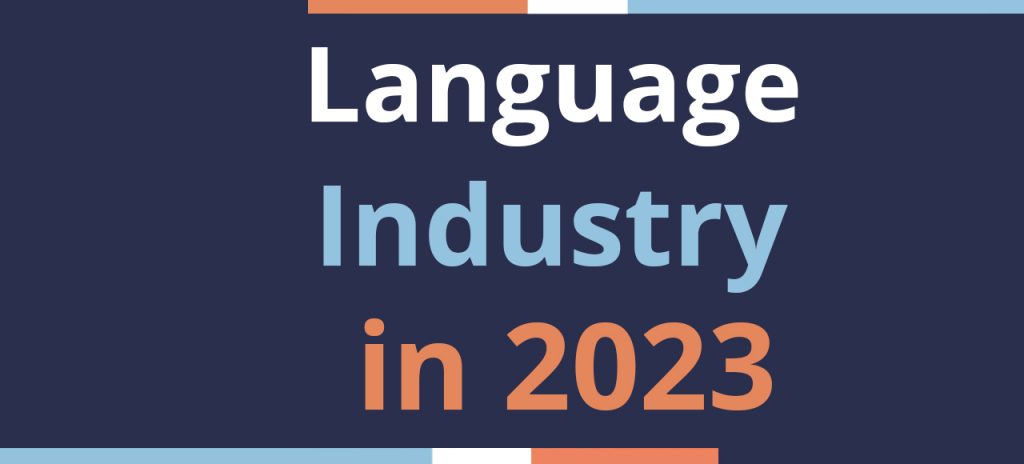What have been the overriding trends and how has generative AI shaped the year?
The LLM era
Much like many sectors around the world, 2023 has seen the language industry reacting to the emergence of large language models (LLMs) like ChatGPT, Llama and PaLM and finding out about how this new technology can add value to existing workflows.
Just over 12 months ago ChatGPT arrived on our screens with a bang, marking its territory unlike anything we’d ever seen before. Suddenly the global media were testing and talking about this generative artificial intelligence (GenAI) and it became impossible to ignore.
Perhaps what made it more noteworthy than other artificial intelligence (AI) models was its democratizing effect. Anyone could sign up and give ChatGPT a go and very soon, it was seemingly being announced as the solution to a plethora of language problems, translation included.
GenAI is undoubtedly propelling technology solutions in new directions and language applications are developing at a pace. Although machine translation has already been using forms of AI for several years (with neural machine translation for example), 2023 is the year of the LLM and the start of the next AI era.
The language industry is still assessing the best ways to integrate these new GenAI platforms. Because large language programs are trained on huge amounts of data, they ‘learn’ how words fit together more efficiently than some machine translation models. This means they often perform strongly when it comes to fluency and when producing language that is conversational and natural. However, the drawbacks have been well noted with ‘hallucination’, bias and copyright issues at the top of the list.
Combining the strongest points of LLMs (content production, idea creation, fluency etc.) with more traditional machine translation systems (customized and more reliable) is likely the way forward. Research is well underway and some of the recent results look at the possibility of leveraging translation memories to enhance LLM translation or using LLMs for translation post-editing. The future of translation definitely looks AI focused.
Evolving job descriptions
Another aspect to this new era of AI has been the scrutiny on how it will change employment. Predictions range from the end of human translation as we know it to the engulfing of all creative content by machines.
Fortunately, the doomsayers don’t appear to have been right. Artificial intelligence is, like other new technologies before it, having an impact on the way we work but it is more a question of job evolution than destruction.
The language industry had already begun the shift towards the post-editing of machine translation and the arrival of ChatGPT has made this shift even more relevant. In a world where the demand for content creation never ceases to rise, meeting the needs of businesses is difficult simply with human input. Getting machines to do the mundane work, provide a rough draft or serve as a general language tool, is one means of increasing productivity.
A year ago, the role of ‘prompt engineer’ was a job title few in the business had heard of. Today it is a position increasingly in demand as manipulating GenAI to produce the most appropriate results becomes a vital skill. It has been predicted that the role of the expert linguist will morph towards areas like language quality control, language data, transcreation and postediting, but this is change that so far, hasn’t happened overnight. Language businesses have always been quick to adopt new technology but understanding the benefits to customers and any risks to the quality of their service are imperative.
Creative pushback
As the year has progressed, a growing number of groups have voiced concerns about the effect of GenAI on the creative professions, including translators, interpreters, copywriters and writers. Professional bodies like the American Translators Association and the European Council of Literary Translators’ Associations went as far as to publish statements underlining the irreplaceable nature of ‘human ingenuity’ and the pitfalls of the overreliance on AI-powered translation and creative writing.
The writers’ strikes in Hollywood also had a knock-on effect in certain parts of the language industry. Some big media localization companies reported less than expected profits in the first half of the year as subtitling and dubbing projects came to a halt and companies were hugely relieved when the strike came to an end in the autumn. The agreement ending the long strike included safeguarding writers against the use of artificial intelligence in script writing and against underpayment for the adaptation of AI-generated material.
The general public has also become savvier to the use of AI-generated content and recent surveys suggest that people are concerned about issues like privacy, misinformation and the ‘loss of human touch’. This growing awareness of the limitations of GenAI is in contrast to the euphoric reactions in 2022 following the release of ChatGPT and is yet another aspect to the technology landscape that language service providers currently have to consider.
The outlook is positive
In its 2023 report Slator found that the language services industry continued to grow in 2022 despite the obvious pressures from global inflation and the energy crisis. The difficult economic conditions have persisted into 2023, dampening confidence especially in the DACH region, but the resilience of the language industry isn’t expected to falter in 2023 despite this. Those in the know are confident that the industry’s ‘dynamic and diverse’ nature and its ability to evolve in tandem with changing market forces are assets that will keep it moving forward.
Perhaps the most notable shift this year with the raging pace of AI development, is the subtle realignment for language companies from their role as providers of translation services to that of universal multilingual content producers. Globalization isn’t suddenly going to be stopped in its tracks and what customers need more than ever is to be able to turn to a single organisation to solve all their language needs.
With an inherent ability to adapt to changing times and quickly embrace technology, the language industry looks to be in the perfect position to take on the current challenges and prosper well into the future.

